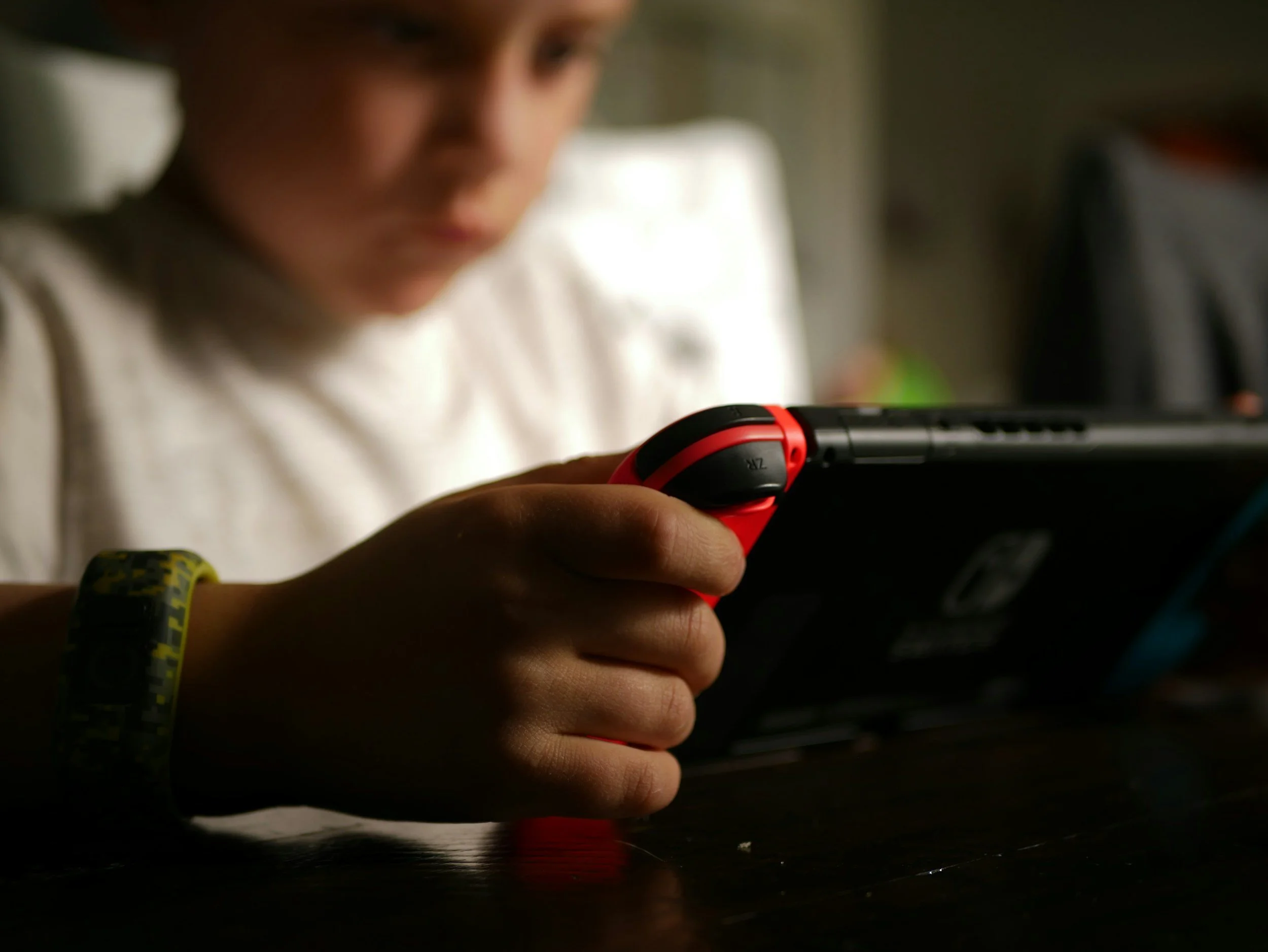Thinking About Buying Your Kid a Nintendo Switch, PlayStation 5, Xbox Series X or Smartwatch for Christmas?
Subscribe to our Substack to receive more advice on this topic and look out for the release of our new virtual panel talk, “Parent's Guide: Setting Healthy Screen Time Limits for Kids Over the Holiday Break”, featuring child psychologist Dr. Lorraine Sin and positive parenting coach Bharati Lachmandas, on 1 December 2025, exclusively for subscribers to Alice, AI Digital Parenting Coach.
Photo: Unsplash
The holiday season brings much-anticipated school breaks and the joy of gifting. However, this period also introduces significant challenges for managing children's digital habits.
Winter holidays are amazing—school's out, the gifts are flowing, and everyone is excited! But here's the kicker: the moment those shiny new gadgets (hello, new phones, Switch, tablet or smartwatch) come out of the box, the school routine vanishes and things can get messy.
Suddenly, it's a screen time free-for-all.
We all see that major spike in gaming marathons, endless social media scrolling, and that constant fight to get them off the device. It's the holiday reality: less structure + new tech = more grumpy kids, more interrupted sleep, and a whole lot less of that cozy "meaningful family time" we all dream about. So what is a parent to do? Read on for the first article in our series in prepping for screentime over the Christmas holidays this year.
Screentime Goes Up During School Breaks…and So Do Problems at Home
Recent systematic reviews of medical and psychological studies reveal that around the world, holiday periods are characterised by higher TV and video game use and lower vigorous physical activity, with the vast majority of studies finding that during vacation times adolescents and children engage in more screen-based media consumption (including social media, gaming and watching for entertainment) that often leads to:
Time displacement (time spent on screens replaces time spent sleeping and other activities);
Negative psychological stimulation based on media content (for example, anxiety from an interaction on social media or feeling from reading other people’s comments on a chat group)
Poorer sleep quality (because the light emitted from tech devices effects circadian timing, sleep physiology, and alertness) (1)
On the other hand, research also shows that more family time during school holidays and breaks can help children sleep more and get healthier screentime balance (2).
Photo: Unsplash
The High Cost of Holiday Gifting: Why New Tech Devices Impact Your Child’s Wellbeing
Market forecasts and historical reviews show that electronics and tech devices account for the top kind of gift purchased during the holiday season globally, with a projected spend of $57.5 billion during the 2025 holiday season alone on these tech goods.
Adobe’s market analysis on online spending, considered a longstanding marker of consumption for marketers and analysts, specifically notes that certain tech devices are expected to draw more attention than others this Christmas, specifically:
activity trackers (sales expected to rise 1,055%)
smartwatches (sales expected to rise 950%)
gaming consoles (sales expected to rise 1,040%) - including Nintendo Switch 2, PlayStation 5, Xbox Series X*
*versus baseline spending earlier in 2025
Other popular tech items expected to be purchased as gifts for families this year include new smartphone models (like the iPhone 17, and Google Pixel 10) and trending toys like Disney Stitch Puppetronic and Labubu Dolls. (3)
Photo: Unsplash
Quick Tips
Plan ahead and start early. Put screentime rules in place before the holiday season starts.
Think about your own screen time usage and whether you can be consistent with role modelling before you implement the rules.
Install parental controls on all your devices before you gift them to your children.
Reflect on why you’re purchasing a new device for your children, whether they’re ready, and think about how to introduce it to them for responsible use.
References
(1) Olds, Tim, et al. "Life on holidays: differences in activity composition between school and holiday periods in Australian children." BMC Public Health, vol. 19, no. S2, 2019, Art. 450. SpringerLink, doi:10.1186/s12889-019-6765-6; LeBourgeois, Monique K., et al. "Digital Media and Sleep in Childhood and Adolescence." Pediatrics, vol. 140, suppl. 2, 2017, p. S92. PMC, doi:10.1542/peds.2016-1758J.
(2) Harbard, Emily, et al. "What's Keeping Teenagers Up? Prebedtime Behaviors and Actigraphy-Assessed Sleep Over School and Vacation." Journal of Adolescent Health, vol. 58, no. 4, 2016, pp. 426–32.
(3) von Hoffman, Constantine. "Holiday Ecommerce to Hit Record $253 Billion – Here's What's Driving It." Search Engine Land, 7 Oct. 2025,https://searchengineland.com/holiday-ecommerce-to-hit-record-253-billion-heres-whats-driving-it-463057.



